Mimicking Nature: Seagrass Restoration in the Bay
Sometimes all it takes is the “perfect storm of events” to align a scientist with the passion that will drive their career. In 1969, Dr. Robert Orth walked into his advisor’s office as a new graduate student at the Virginia Institute of Marine Science (VIMS) with no idea of what he wanted to study other than he liked benthic dwelling animals. His advisor suggested researching animals in eelgrass beds with another PhD student who was conducting some of the first faunal work done on eelgrass in the Chesapeake Bay region. Orth knew he loved research and working with animals in seagrasses, but had no inkling as to what lie ahead of him in this chosen path of research. While doing his masters research on eelgrass infauna, he was also involved in marsh ecology studies as a research assistant in his advisor’s lab. Orth was then recruited by a professor in Maryland to help with their marsh work as a PhD student at the University of Maryland. However, after arriving at Maryland in 1971, his committee suggested he continue his work on eelgrass animals, as it seemed more exciting and allowed him to build on what he did for his master’s work. What he didn’t know at that time was that, by continuing his work in eelgrass beds rather than marshes, he had unknowingly set himself in an advantageous position within an area of research that was about to explode. In June,1972, Tropical Storm Agnes reached the shores of the Chesapeake Bay and altered the future of seagrass in the bay and Dr. Orth’s career. Reflecting years later, Tropical Storm Agnes became known as the storm that transformed an already evolving Chesapeake Bay and Dr. Orth, now directing the Submerged Aquatic Vegetation (SAV) lab at VIMS, found himself at the forefront of a major research movement in restoring seagrass ecosystems around the world.
Eelgrass (Zostera marina), the most common saltwater seagrass in the bay, was historically taken for granted as it was found throughout the lower bay and was often even considered a nuisance. When Tropical Storm Agnes hit in the summer of ’72, it brought with it huge amounts of freshwater and sediment that devastated underwater grass communities. It was literally the ‘coup de grace’ that essentially changed the face of the bay overnight. Over 50% of the eelgrass that had been present over the previous decade was lost with little hope of being restored. In 1978, the Chesapeake Bay Program (CBP) was founded and it immediately identified the 10 major environmental concerns that they wanted to address. Of the top 3 areas selected for funding, seagrass research was one of them. Dr. Orth received funding from CBP to conduct research regarding eelgrass restoration. As seagrasses were largely understudied before their devastation, Dr. Orth and his team had to start at the beginning, looking at their basic biology and their role in the marine environment.
With a piqued interest in seed ecology from some of that early basic work in the 1980s, Dr. Orth began to research everything from how seeds become dispersed from established beds to what triggers their germination. Orth found they could collect a lot of seeds and that they all germinated in November when water temperatures cooled, but debated methods for dispersing seeds throughout the bay. They eventually decided to test something as simple as broadcasting them from a boat. “We said ‘okay, let’s go to Mumfort Island and let us look at, if we just simply broadcast seeds, what happens.’…We put them out in October and we had no idea what we would see. …when we got up in the air the next spring, what we saw blew us away.”
They could see near perfect lines of eelgrass growing along the exact transects that they had driven the boat over when dispersing the seeds. That simple photograph changed the course of history in Orth’s program and, most importantly, it revealed one of the mysteries of just how nature facilitates the recovery of seagrass meadows naturally with seeds. The most incredible find from the picture was that these seeds, which sink very fast, didn’t move far from their landing spot once they reached the sediment surface. They are buried rapidly, in some instances in minutes, usually by animals that live in the sediment (the animals Orth first studied in 1969) thus providing an explanation for the long lines of eelgrass that mirror the boat tracks.
Fast forward to the late 1990s when Orth, who had been attempting to restore lost eelgrass in the Chesapeake Bay, heard that someone found a couple of natural patches of eelgrass in one of Virginia’s seaside bays. This was shocking as no one had seen eelgrass in the seaside bays for decades following its disappearance in the 1930s. Orth had even tried transplanting eelgrass to one of the seaside bays in the early 1980s, but found his efforts to be unsuccessful. His early work seemed to support the prevailing thought was that these bays had become too turbid, or too dirty, to support regrowth of eelgrass. When Orth found those natural patches the proverbial ‘light’ went on – maybe it wasn’t because these bays were too turbid, maybe it was because eelgrass plants couldn’t get there. Perhaps it was because these coastal bays were so isolated from existing populations in the Chesapeake Bay and Chincoteague Bay to the north that it was impossible for eelgrass seeds to be transported there. Orth’s early research showed that floating flowering shoots of eelgrass carrying seeds were how eelgrass spreads to different places, another important discovery in the SAV lab. Thus was born a restoration program that, at the time no one, not even Orth, could have ever imagined its eventual outcome 15 years later.
That observation in 1997 triggered some initial work, funded by NOAA’s Virginia Coastal Program and Virginia’s Recreational Fishing License, using adult eelgrass plants in small test plots (a few square meters) in several new areas near those natural patches to see if they were a fluke of nature. It turns out that they weren’t, as the test plots survived for well over a year. When faced with the question of how to get eelgrass back to these bays that spanned thousands of acres, Orth decided to mimic what nature would naturally do given enough time. His goal was to enhance the dispersal rates of grasses in the bays by manually delivering seeds to the areas and compressing the time it takes for them to get there. While they certainly weren’t the only ones attempting to restore these populations, they were one of the few that achieved greater restoration success in a shorter amount of time by using seeds instead of transplanting adult plants, a time consuming and labor intensive endeavor.
As this continued, restoration efforts could only have been accomplished with steady funding from various federal and state agencies, Orth wanted to find a way to thank one of the agencies that had been funding him from the start. He thought, why not do something with seeds? So he and his staff broadcast seeds in a pattern of letters of the agency that had been funding them – The National Oceanic and Atmospheric Administration (NOAA). Two years later, when they flew over the site where they had broadcast their seeds, they found that they had created a unique, and environmentally friendly, thank you note.
What has surprised Orth, and many of his colleagues from around the world who have been following this work, is how quickly eelgrass has spread naturally from the areas that were directly seeded. While 60 million seeds were broadcast into 450 acres in these seaside bays during these 15 years, eelgrass spread naturally from the seeded plots and now covers 6,100 acres of seaside bays. This is the largest seagrass restoration effort in the world in terms of area and is one of the few restoration efforts that has seen such great success. However, Dr. Orth does warn that if we continue to see hotter summers and increased sediment deposition in the bay, seagrass populations will never return to their historical abundance.
So, for the past 15 years, the SAV lab has gone into the coastal bays and dispersed the seeds that they spend each spring harvesting from various dense beds in the Chesapeake Bay. This year, I had the opportunity to lend a hand in this effort, spending a day sitting on the bow of the boat tossing my portion of the 6.4 million seeds dispersed into the bay as we drove across endless transects and plots. With such promising results, these seed broadcasts will continue – spending one day on a boat dispersing the seeds that the SAV lab spends all year harvesting and preparing for distribution. Hopefully, I will have the chance to go back out with them in the spring to see these restored seagrass beds first hand.
Restoring these historic eelgrass communities in the Chesapeake and in the coastal bays has been critical as seagrass beds are huge blue carbon sites. Blue carbon is the sequestration of carbon from the atmosphere into long-term storage in the ocean, effectively removing carbon dioxide that we emit into the atmosphere on a daily basis. Many blue carbon ecosystems have the ability to sequester more carbon than terrestrial environments. Though it is difficult for us to put an exact dollar value on the restoration of these critical habitats, Dr. Orth says that they are among the most important to restore as they act as “the canary for water quality.” The main factors that have been making restoration difficult, however, are rising temperatures and poor water quality. “It’s simple. If it’s clean, they’ll come. If it isn’t, they’ll die,” says Orth.
Dr. Orth and the SAV lab continue to expand their research efforts in eelgrass ecology and bay restoration efforts. He currently has a PhD candidate in Australia working with a group to conduct seed broadcasts in Perth and research recruitment bottlenecks – the likelihood that a seed will survive after distribution. Though seagrass research has been expanding worldwide, the idea of broadcasting seeds is still relatively new and could aid in progressing restoration efforts around the globe. Dr. Orth is also working with Dr. Mark Luckenbach of VIMS to restore scallop populations in the coastal bays, populations which are dependent on having healthy eelgrass beds to use as nursery sites. Restoring these populations could lead to the reestablishment of a historic fishery that was lost when scallop populations disappeared after eelgrass died out in these coastal bays in the 1930s. Baby scallops rely on eelgrass to settle on when they first arrive in the area – no eelgrass, no scallops. By starting with the restoration of eelgrass, the base of this historic and vital ecosystem, we can work towards restoring many of the communities that have diminished or disappeared from the bay over time.
As for me, I got involved in seagrass research in 2014 by volunteering with Dr. Orth’s postdoc Jon Lefcheck. In his lab, we have been looking at the structure and diversity of mesograzer seagrass communities and how they are changing over time. I am now in the same precarious position that Dr. Orth was in before beginning his master’s program and I often find myself wondering where the winds will carry me next. Whether or not my “perfect storm” furthers me down the path of seagrass restoration efforts, I am happy to have the opportunity to be a part of a lab that is continually advancing marine ecosystem restoration efforts.
Interested in learning more?
– Check out the SAV lab page or their new Facebook page ‘SOS Save Our Seagrass/Save Our Scallops’ to learn more about the research that they do.
– Keep an eye out for summer internships with the SAV lab! Contact jjorth@vims.edu or jslefche@vims.edu for potential undergraduate research or volunteer opportunities.
Comments are currently closed. Comments are closed on all posts older than one year, and for those in our archive.

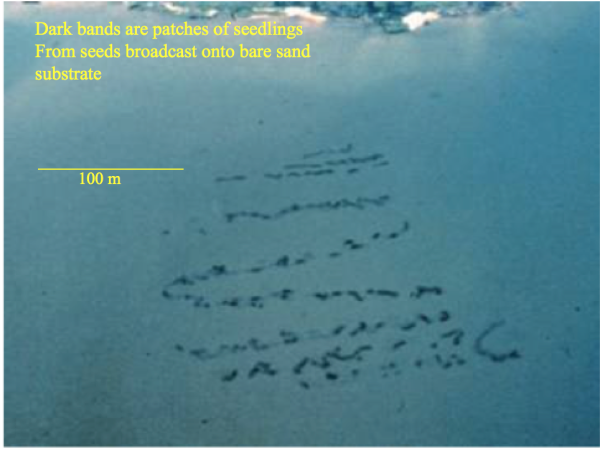
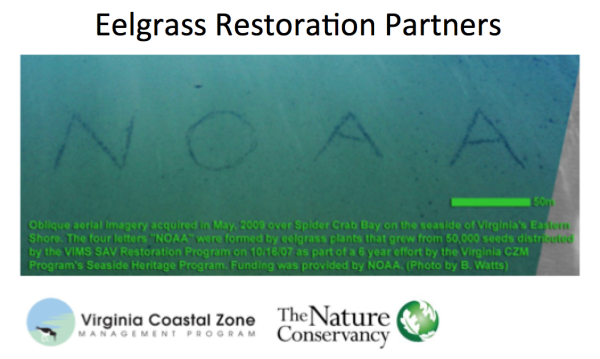
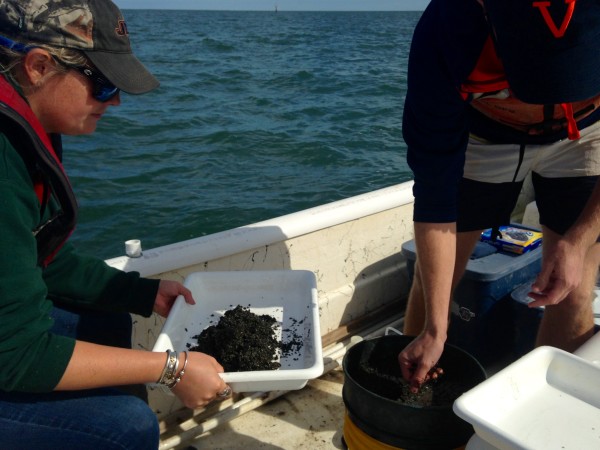
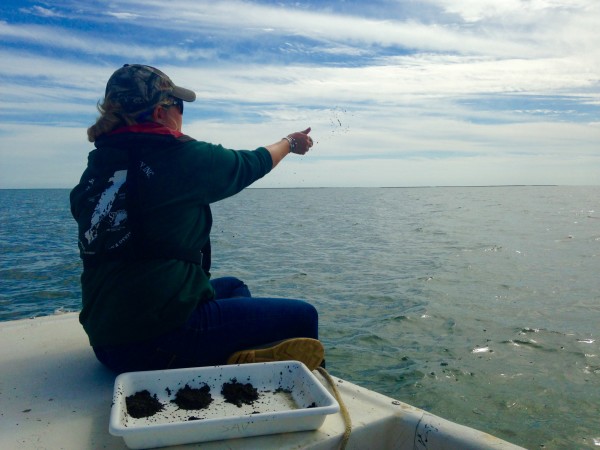
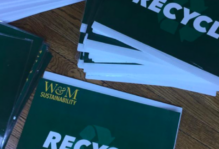
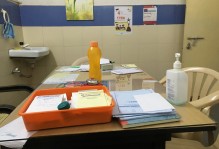
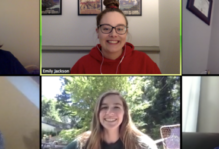
Thanks for the great post, Rachel! I’ve shared it on the SOS page. Have a great holiday break!
Paul